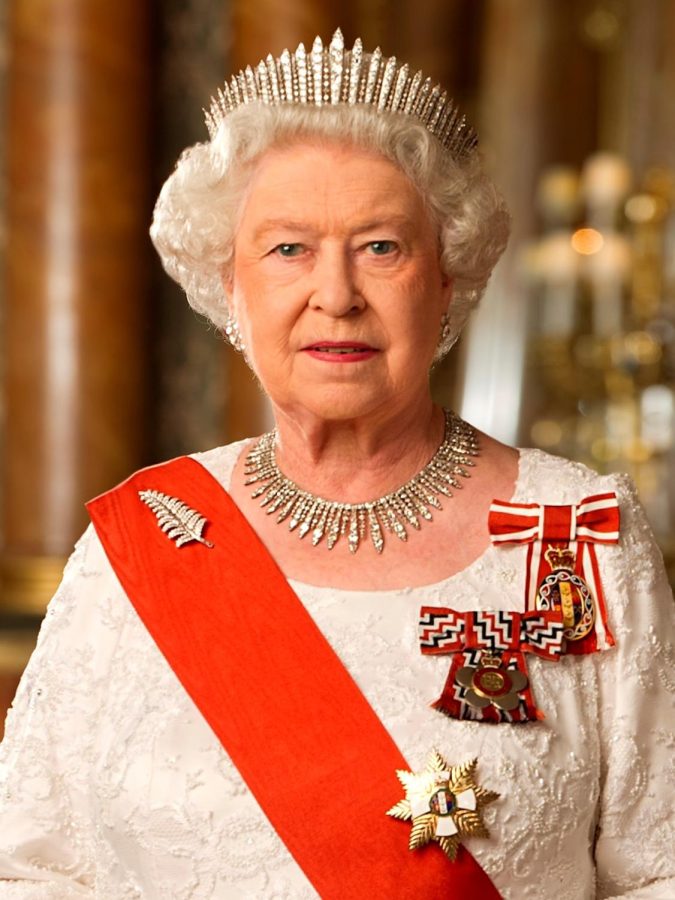Handing Over the Throne: The Story Behind Queen Elizabeth II’s Reign
On Sep. 8, 2022 Queen Elizabeth II passed away at age 96. Now the crown passes to her eldest son, King Charles III, after her reign of almost 71 years. Her story dates back to 1956 when she became Queen after her father, King George VI’s unexpected death at age 56.
Queen Elizabeth II’s reign is the second longest recorded of any sovereign in history and the longest recorded female head of a state in history. Queen Elizabeth II’s start was anything but normal, though. In fact, her ascension to the throne was not only unexpected to the whole world, but also to herself.
Queen Elizabeth II’s rise to the throne in 1956 at age 25 was unforeseen as she was third to the line of succession when her grandfather, George V passed away in 1936. Especially since Elizabeth II was a female in the Royal Family, she did not have favorship or as much of a chance to rule the entirety of England one day.
However, that all changed after her father, George VI’s, death in 1952. The expected new King was going to be Queen Elizabeth’s paternal uncle, Edward VIII, but he proceeded to step down from his royal status after his desire to marry Wallis Simpson. Simpson was a divorced, American socialite at the time, and his wanting for marriage to her was seen as scandalous and “un-royal,” as it disobeyed much of the Church’s values and also the Royal Family’s.
Queen Elizabeth II’s coronation came the following year in 1953 and took fourteen months to plan out and arrange. Every lavish detail of her silk white dress that was embroidered with flowers and made from materials from the countries of her commonwealth at the time such as India, Scotland, and Pakistan. The coronation aired live on television via the British Broadcasting Corporation Television Service and had a massive viewing on television of 27 million people in the United Kingdom and 11 million on the radio according to the Royal UK website.
Following her ascension to the throne, her coronation, and the subsequent celebrations, came many years of dedication from Queen Elizabeth II to England and countries of her commonwealth. Among her successes was decolonizing and freeing parts of Africa and the Caribbean ruled by England, being the first of the British royals to visit a communist country, and visiting West Germany, which symbolized the reconciliation of England and Germany after WWII according to People Magazine.
As for more modern times, Queen Elizabeth II’s life has been dramatized by the popular Netflix series and Golden Globe winning show, The Crown. The show’s first season displays the Queen’s early life, the start of her relationship with her husband of 73 years, the complicated bond between her and her sister, Margaret, and of course, her start as the Queen. Over the course of the TV show new “characters” are introduced such as Margaret Thatcher, also known as the “Iron Lady”, and the beloved Princess Diana in season four.
One of the Queen’s highest achievements was her attempt and success with modernizing the monarchy by giving her son, King Charles III the opportunity to marry Diana Spencer, who was not a royal. Before the marriage of King Charles III and Princess Diana, all marriages inside the British Royal Family had to be to members of other Royal families. According to ABC News, Prince Philip and Queen Elizabeth were second cousins, once removed and are related through Queen Victoria. Intermarriage in the British Royal family has progressively stopped as more modern customs are being adapted from them.
The shift in marriage because of love, not because of royal status changed the game for generations to come inside the British Royal family such as King Charles III and Princess Diana’s eldest son William, Prince of Wales and his wife Catherine, Princess of Wales. The Royal Family furthermore became even more modern when Prince Harry, Duke of Sussex married American actress, Meghan Markle, Duchess of Sussex.
Queen Elizabeth II’s funeral occurred on Sep. 19 and was the final conclusion of the ten days of mourning her death in England. According to CNN, an estimated 29.2 million people watched the Queen’s funeral, and made British television history making it the second most watched televised event after the 1966 World Cup.
The Queen’s elegance and strength will be missed. She led a remarkable legacy for her son, King Charles III to now uphold. Her service to England for over two-thirds of her life does not go unnoticed. Long live the Queen.
“I declare before you all that my whole life, whether it be long or short, shall be devoted to your service and the service of our great imperial family to which we all belong.”
–Queen Elizabeth II


